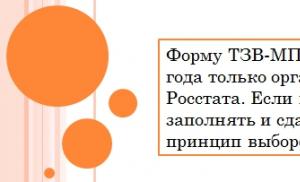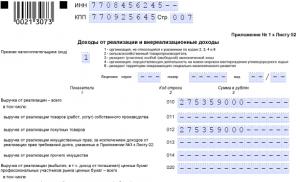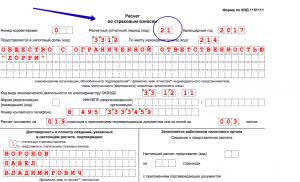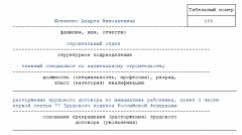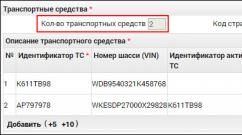Dangers of a military nature and their inherent features. The main types of weapons of mass destruction and their damaging factors
Home Encyclopedia Dictionaries More
Weapons of Mass Destruction (WMD)
Types of weapons capable of causing massive losses and destruction up to irreversible changes in the environment. The main distinguishing features of WMD are: multifactorial destructive action; the presence of damaging long-acting factors and their spread beyond the target; prolonged psychotraumatic effect in humans; severe genetic and environmental consequences; the complexity of protecting troops, the population, critical facilities and eliminating the consequences of its use. WMD includes nuclear, chemical and biological weapons. The development of science and technology can contribute to the emergence of new types of weapons that are not inferior in their effectiveness and even surpass the already known types of WMD (see Weapons based on new physical principles).
Nuclear weapons (NW), is in service with many armies and navies of the world, almost all types of the Armed Forces and branches of service. The main means of its destruction is nuclear weapons. In addition to various types of ammunition, nuclear weapons include the means of delivering them to the target (see Nuclear weapon carriers), as well as means of combat control and support. Strategic nuclear weapons can have high-yield nuclear weapons - up to several Mt (100 kt = 1 Mt) in TNT equivalent and reach to any point on the globe. It is capable of destroying administrative centers, industrial and military facilities in a short time, causing mass disasters - fires, floods and radioactive contamination of the environment, destroying a significant number of troops and the population. The main delivery vehicles for strategic nuclear weapons are strategic bombers and intercontinental ballistic missiles. Non-strategic nuclear weapons have nuclear charges ranging from several units to several hundred kilotons and are designed to destroy various targets at operational-tactical depths. This type of nuclear weapons includes ground-based medium-range missile systems, air-to-ground missiles, aerial bombs, anti-ship and anti-submarine missile systems, mines and torpedoes with nuclear charges, atomic artillery, etc.
The main damaging factors of nuclear weapons (see. The destructive effect of a nuclear explosion) include a shock wave, light radiation, penetrating radiation, radioactive contamination (contamination) and an electromagnetic pulse. The damaging factors of nuclear weapons depend on the power and type of nuclear charge, on the type of nuclear explosion (ground, underground, air, high-altitude, surface, underwater). The simultaneous action of damaging factors of nuclear weapons leads to a combined defeat of people, equipment and structures. Injuries and contusions from a shock wave can be combined with burns from light radiation and radiation sickness from penetrating radiation and radioactive contamination (contamination). Equipment and structures are damaged by a shock wave with simultaneous ignition from light radiation, and radio-electronic equipment is exposed to an electromagnetic pulse and ionizing radiation. In settlements, industrial centers, environmental objects (forests, mountains, etc.), explosions of nuclear weapons (munitions) lead to massive fires, blockages, floods, and other emergency phenomena, which, along with radioactive contamination (contamination), will become insurmountable obstacles in the elimination of the consequences of the enemy's use of weapons of mass destruction.
Chemical weapons (CW), is based on the action of combat toxic chemicals (BTCS) - poisonous substances (OS), toxins and phytotoxicants. CW includes single-use chemical munitions (artillery shells, air bombs, checkers, etc.) or reusable chemical warfare devices (pouring and spraying aviation devices, thermomechanical and mechanical generators). In international law, CW includes: toxic chemicals and chemical reagents involved in any stage of the production of these weapons; ammunition and devices designed to be destroyed by toxic chemicals; any equipment specially designed for the use of chemical munitions and other similar devices.
CW based on chemical agents and toxins is intended for mass destruction of manpower, hampering the activities of troops, disorganization of the control system, disabling rear and transport facilities, and based on phytotoxicants - for the destruction of agricultural crops. crops in order to deprive the food base, poisoning water, air, etc. Aircraft, missiles, artillery, engineering, chemical and other troops are used as means of delivering chemical weapons to targets.
Among the combat properties and specific features of CW are: high toxicity of BTXV, which allows in small doses to cause severe and lethal doses of human injury; the biochemical mechanism of the damaging effect of BTXV on living organisms and the high moral and psychological effect of exposure to people; the ability of agents and toxins to penetrate into open engineering, industrial structures and facilities, residential buildings and infect people in them; the difficulty of timely detection of the fact of the use of chemical weapons and the establishment of the type of agents or toxins used; duration of action due to the ability of BTXV to maintain damaging properties over time.
The listed properties and features of chemical weapons, the large scale and severe consequences of its use cause significant difficulties in protecting troops and the population, require a set of organizational and technical protective measures, as well as the use of various means of detection, warning, direct individual and collective protection, elimination of the consequences of infection, and also carrying out preventive and therapeutic measures (see Elimination of the Consequences of the Use of Weapons of Mass Destruction by the Enemy).
Biological weapons (BW), is based on the action of biological (bacterial) (BS). Pathogenic (pathogenic) microorganisms (viruses, rickettsia, bacteria, fungi, etc.) and highly toxic products of their vital activity (toxins) that are capable of causing mass diseases of people and animals (typhoid fever, cholera, smallpox, plague, glanders, etc.), as well as plants (grain rust, rice blast, potato late blight, etc.).
BO includes ammunition equipped with BS (missile warheads, cassettes and containers, pouring and spraying devices, aerial bombs, cannon and rocket artillery shells, etc.) and ammunition carriers (delivery vehicles) (missiles of various ranges, aircraft of strategic, tactical and transport aviation, remotely piloted and autonomously controlled unmanned aerial vehicles, radio and remotely controlled balloons, submarines and surface ships, artillery pieces, etc.).
The use of BW can lead to the spread of infectious diseases to a large number of people and cause epidemics. There are various methods of mass destruction of people by BS: contamination of the surface layer of air with aerosol particles; dispersion in the target area of artificially infected with BS blood-sucking insect carriers of infectious diseases; contamination of air, water and food, etc. The aerosol method of using BS is considered the main one, because. allows you to suddenly and covertly infect air, terrain and people on it, equipment, vehicles, buildings and other objects over large areas. At the same time, people are exposed to infection not only openly located on the ground, but also those inside objects and engineering structures. With this method, it is possible to infect the air with a combination of different types of BS, which makes it difficult to carry out their indication, protective and therapeutic measures. The conversion of biological formulations into an aerosol can be carried out in two main ways: due to the energy of an ammunition explosion and using spraying devices.
The effectiveness of BO is determined by its following properties: high damaging ability of BS; the ability of a number of contagious BS to create large foci of the epidemic; the presence of an incubation (hidden) period of action; complexity of indication; strong psychological effect and a number of other properties. The effectiveness of the BO action also depends on: the degree of protection of the troops and the population, the availability and timely use of individual and collective protective equipment, as well as preventive and therapeutic drugs; meteorological, climatic and topographic conditions (wind speed and direction, degree of atmospheric stability, solar radiation, precipitation and air humidity, terrain, etc.), time of year and day, etc.
Achievements in biology and related sciences (biochemistry, genetics and genetic engineering, microbiology and experimental aerobiology) can lead to the development of new pathogens or an increase in the efficiency of known BSs. Therefore, the problem of developing and using BW for sabotage and terrorist purposes is of particular danger, when places of large concentrations of people, protective structures, water sources, water supply networks, food warehouses and shops, public catering establishments, etc. can become objects of its use.
The possibility of using BO requires the development of effective measures for the antibiological protection of the population and territories, as well as the elimination of the consequences of the action of the BS (see Eliminating the Consequences of the Use of Weapons of Mass Destruction by the Enemy).
The use of any type of WMD can lead to unpredictable results for all of humanity. Therefore, a number of states, political parties, public organizations and movements launched a struggle to ban the production, distribution and use of WMD. In this regard, a number of international treaties, conventions and agreements have been adopted. The main ones are: "Nuclear Test Ban Treaty 1963", "Nuclear Non-Proliferation Treaty 1968", "Convention on the Prohibition of the Development, Production and Stockpiling of Bacteriological (Biological) and Toxin Weapons and Their Destruction 1972", "Convention on prohibition of the development, production, accumulation and use of chemical weapons and their destruction 1997”, etc.
In the Russian Federation, there are special troops designed to perform specific tasks of radiation, chemical and biological protection, to eliminate the consequences of the use of weapons of mass destruction - the Radiation, Chemical and Biological Protection Troops, the Civil Defense Troops. The Strategic Missile Forces have a special Radiation Chemical and Biological Protection Service of the Strategic Missile Forces and a unit of radiation, chemical and biological protection of the Strategic Missile Forces.
Dream up and imagine the wars of the future: there are no tanks and machine guns, and the opponents fire at each other from electromagnetic guns with projectiles that can reach the opposite side of the Earth in a few minutes. Some of these plans have already been implemented, so future generations will not be bored. But the most dangerous weapon in the world probably has not even been invented yet.
1. Tsar bomb
The Soviet Union blew up the most powerful thermonuclear charge at a test site located on Novaya Zemlya, and only a year and a half later, N. Khrushchev “pleased” the world with the news that the USSR had a hydrogen bomb with a capacity of 100 megatons.
The political purpose of the tests was to show America its military power, since it was able to create a hydrogen bomb 4 times smaller than the power. The test was aerial - the "tsar bomb" (then it was called "Kuzkin's mother" in Khrushchev's language) exploded at an altitude of 4.2 km.
The explosion mushroom rose into the stratosphere (67 kilometers), having a diameter of 9.2 kilometers. Three times the shock wave of the explosion circled the globe, another 40 minutes after it the ionized atmosphere spoiled the quality of radio communications for hundreds of kilometers around. The heat from the explosion directly below the epicenter was so strong that it turned even stones into ashes. Fortunately, this gigantic explosion was quite "clean", since 97% of the energy was released due to thermonuclear fusion, and, unlike nuclear decay, it almost does not pollute the territory with radiation.
The German Union for Technical Inspection annually issues reports on the defectiveness of various brands of machines. Any brand that enters the technical inspection is checked at least ...
2. Castle Bravo
It was the American answer to the “kuzkin mother”, but much more “thin” - some miserable 15 megatons. But if you think about it, this figure should impress. With the help of such a bomb, it would be quite possible to destroy a large metropolis. Structurally, it was a two-stage ammunition consisting of a thermonuclear charge (solid lithium deuteride) and a uranium shell.
The explosion was carried out on Bikini Atoll, and a total of 10,000 people watched it: from a special bunker 32 km from the explosion site, from ships and aircraft. The strength of the explosion exceeded the calculated one by 2.5 times due to the underestimation of the fact that one of the lithium isotopes, which were considered ballast, also participated in the reaction. The explosion was ground-based (the charge was in a special bunker) and left behind a giant funnel, but the main thing is that it was incredibly “dirty” - it contaminated a large space with radiation. Many local residents, Japanese sailors and even the American military themselves suffered from it.
3. Atomic bomb
This type of weapon started a new chapter in military affairs. As you know, the Americans were the first to create an atomic bomb, who on July 16, 1945 conducted its first test in the desert in New Mexico. It was a single-stage plutonium device called the Gadget. Not satisfied with the first successful test, the US military hastened almost immediately to test it in a real war.
We can say that the tests in Hiroshima and Nagasaki were successful - both cities were destroyed, thousands of people died. But the world was horrified by the power of the new weapon and the one who owned it. That use of nuclear weapons on real targets, fortunately, turned out to be the only one. In 1950, the USSR got its own atomic bomb, as a result of which an equilibrium was created in the world based on inevitable retribution and mutual nuclear destruction in the event of a “hot war” unleashing.
Having acquired such a powerful weapon, the two countries had to resolve the issues of its prompt delivery to the target. As a result, strategic bombers, ballistic missiles and submarines were developed. Since the air defense system began to outperform aviation, preference was given to missiles, which are now the main delivery vehicle for nuclear charges.
4. Topol-M
This modern missile system is the best delivery vehicle in the Russian army. Its 3-stage missiles are invulnerable to any modern type of air defense. A missile designed to carry nuclear charges is ready to hit a target 11,000 km away. The Russian army has about 100 such complexes. The development of Topol-M began back in the USSR, and its first tests took place in 1994, with only one of 16 launches ending in failure. Although the system is already on alert, it continues to be improved, in particular, the head of the rocket.
5. Chemical weapons
The first mass use of chemical weapons in combat conditions occurred near the Belgian city of Ypres in April 1915. Then the Germans launched clouds of chlorine at the enemy from cylinders previously installed on the front line. Then 5,000 died and 15,000 Frenchmen, who were not ready for such a turn, were seriously poisoned. Then the armies of all countries indulged in the use of mustard gas, phosgene and bromine, far from always getting the expected result.
The Japanese in the next world war repeatedly used chemical weapons in the fighting in China. For example, when they bombed the city of Woqu, they dropped a thousand chemical shells on it, and another 2,500 bombs were thrown on Dingxiang. The Japanese used chemical weapons until the end of the war. According to rough estimates, about 50,000 soldiers and civilians died from the use of chemical weapons.
The next large-scale use of chemical weapons was distinguished by the Americans in Vietnam, who in the 60s sprayed 72 million liters of defoliants over its jungles, with the help of which they sought to destroy the vegetation in the thick of which the Vietnamese guerrillas, who so annoyed the Yankees, hid. These mixtures contained dioxin, which had a cumulative effect, as a result, people developed diseases of the blood and internal organs, and genetic mutations occurred. Almost 5 million Vietnamese suffered from chemical attacks by the Americans, and the number of victims continued to grow after the end of the war.
The last time chemical weapons were used in Syria was in 2013, with the conflicting parties blaming each other for this. As you can see, the ban on chemical weapons by the Hague and Geneva conventions does not stop the military much. Although Russia destroyed 80% of the stocks of chemical weapons it inherited from the USSR.
6. Laser weapons
This is more of a hypothetical weapon under development. So, in 2010, the Americans reported a successful test of a laser gun off the coast of California - a 32 MW device was able to shoot down 4 drones at a distance of over 3 km. If successful, such a weapon will be able to destroy targets hundreds of kilometers apart from space in a matter of seconds.
7. Bioweapon
By antiquity, biological weapons are ready to compete with cold ones. So, one and a half thousand years BC. e. The Hittites struck the enemies with a plague. Understanding the power of biological weapons, many armies, leaving the fortresses, left infected corpses there. The Japanese during World War II, in addition to chemical weapons, did not disdain biological weapons.
The causative agent of anthrax is one of the most dangerous for humans. This bacterium lives for a long time in the ground. In 2001, letters with white powder began to arrive in the American Parliament, and immediately there was a fuss that these were anthrax spores. 22 people were infected, 5 of whom died. Most often, infection can occur through skin lesions, but it is also possible to become infected by swallowing or inhaling bacillus spores.
Now both genetic and entomological weapons have been equated with biological weapons. The second is associated with the use of insects that suck blood or otherwise attack a person, and the first is able to selectively act on groups of people with a certain genetic feature. In modern biological munitions, strains of various pathogens are usually used - in this way, an increase in mortality among people exposed to it can be achieved. Preference is given to strains that are not transmitted between people, so that an attack on a specific target does not turn into a large-scale epidemic.
8. MLRS "Smerch"
The ancestor of this formidable weapon was the famous Katyusha, which was used with great success against the German army. After the atomic bomb, this, according to experts, is the most terrible weapon. It takes only 3 minutes to prepare a 12-barreled Smerch for battle, and a volley is fired in 38 seconds. This system effectively destroys modern tanks and other armored vehicles. Rocket projectiles can be launched from a remote control or directly from the cab of a car. "Smerch" can be successfully used in extreme heat and in severe cold, at any time of the day.
This weapon is not selective - it destroys armored vehicles and personnel over a large area. Russia exports this type of weapons to 13 states, including the United Arab Emirates, Venezuela, India, Peru, and Kuwait. The machine with the installation is not too expensive for its efficiency - about 12.5 million dollars. But the work of one such installation is capable of stopping the advance of an enemy division.
9. Neutron bomb
American Samuel Cohen invented the neutron bomb as a variant of a nuclear weapon with minimal destructive power, but a maximum of radiation that kills all life. The shock wave here accounts for only 10-20% of the energy released during the explosion (in an atomic explosion, half of the explosion energy is spent on destruction).
After the development of the neutron bomb, the Americans put it into service with their army, but after a while they abandoned this option. The action of the neutron bomb turned out to be ineffective, since the released neutrons are actively absorbed by the atmosphere, and the effect of their action is local. Moreover, neutron charges had a minimum power - only 5-6 kilotons. But much more useful were neutron charges in missile defense systems. A neutron anti-missile that explodes near an enemy aircraft or missile creates a powerful neutron flux that disables all electronics and control of the target.
Another direction of development of this idea was neutron guns, which are a generator capable of creating a directed neutron flux (actually an accelerator). The more powerful the generator, the more powerful neutron flux it can provide. The armies of the United States, Russia and France now have similar weapons.
Cats are not always affectionate and friendly with people or other animals. Cat owners are better aware of these traits. List of the most dangerous...
10. Intercontinental ballistic missile RS-20 "Voevoda"
This is also a Soviet model of strategic weapons. NATO representatives nicknamed this missile "Satan" for its exceptional destructive power. For the same reason, she got into the ubiquitous Guinness Book of Records. This ballistic missile can hit objects at a distance of 11,000 kilometers. Its multiple reentry vehicles are capable of bypassing a missile defense system, which makes the RS-20 even scarier.
Despite the reduction in the danger of large-scale war or conflicts between states, weapons of mass destruction continue to be one of the most dangerous means of struggle. The ever-increasing threat of its use by extremist and terrorist organizations forces us to continue to pay attention to the issues of protection against damaging factors. In generally accepted terminology, weapons of mass destruction are divided into three main types: nuclear, chemical, biological (bacteriological).
Nuclear weapon
It is the main variety and within a short period of time allows you to destroy the economic and industrial potential of any state, cause huge losses in human and biological resources, infect vast territories and make them uninhabitable. As a weapon of mass destruction, nuclear and thermonuclear charges have in their principle a colossal energy release that occurs when the ammunition is detonated. Their power

expressed in TNT equivalent, and measured in kilo- and megatons. The factors of the results of the detonation of a nuclear charge in terms of their damaging abilities are as follows: light radiation, shock wave, penetrating radiation, radioactive contamination, electromagnetic impulse. Thermonuclear (neutron) munitions affect biological objects (people, animals), hitting them mainly with penetrating radiation, which has a more powerful radiation flux. The protective properties of environmental materials contribute to the reduction of the consequences of the use of nuclear weapons. A specially equipped shelter allows you to fully protect against all damaging factors. A huge danger to life and health is the impact of ionizing radiation, which, like penetrating radiation, leads to radiation sickness.
Chemical weapon
The combat capabilities of chemical weapons are based on the toxic abilities of the created combinations and existing elements. Its varieties differ in nerve-paralytic, blistering, asphyxiating, general poisonous, irritating and psychochemical effects. Unlike nuclear weapons, chemical weapons of mass destruction have the ability to disable only manpower without damaging infrastructure. The main features of its use include rapidly dissipating smoke appearing in the places of ammunition rupture, bands of air masses changed in consistency, the appearance of oily spots on vegetation, ground, and buildings. At the same time, people feel irritation of the respiratory organs, vision, a change in the physiological state.
Biological weapons
These weapons of mass destruction make it possible, through the use of microorganisms that have pathogenic properties, to infect people, farm animals and plants. Its capabilities cause epidemic diseases of a health-threatening nature, affecting for a long time, in some cases having a latent (incubation) period. Timely detection of microbes and toxins that have appeared is very difficult; they easily penetrate into leaky shelters, infecting people in them. The main signs of use are large fragments and fragments of ammunition (rockets, shells, containers), drops of unknown liquids and powdery substances on the ground, significant accumulations of small insects at the place where the ammunition (container) fell, the suddenness and mass nature of human and animal diseases that are atypical for this terrain.

Modern weapons of mass destruction have a much wider range of their capabilities, including the ability to selectively destroy the required targets and objects. But it is hidden in the laboratories and arsenals of the armies of states. The threat from terrorists and extremists is posed by clandestine means, as well as the possibility of threats to life and health as a result of man-made disasters and accidents.
Weapons of mass destruction and defense against it A weapon of mass destruction (WMD) is a large destructive weapon, the use of which causes massive loss of life and destruction. Existing types of WMD include nuclear, chemical and. Protection - a set of organizational, engineering, medical and other special measures aimed at preventing or mitigating the destructive effect of weapons of mass destruction. These measures include: preparing protective structures and providing people with personal protective equipment; notification of the population about the threat of an attack using weapons of mass destruction; the withdrawal of the population from large cities to the suburban area; rescue and urgent emergency recovery work in the lesions and the provision of medical care to the victims; radiation, chemical and biological observation and control of contamination of the natural environment, food, drinking water. These measures are carried out during the threatened period, at the time of the use of weapons of mass destruction and during the liquidation of the consequences of their use. The modern has enormous power, many times greater than the power of the first atomic bombs. It is customary to distinguish between air, ground (surface), underground (underwater) and high-altitude nuclear explosions. The damaging factors of a nuclear explosion are a shock wave, light, penetrating, radioactive terrain, electromagnetic and seismic explosive waves. The shock wave is a sharply limited area of compressed air moving at supersonic speed from the center of the explosion. When exposed to a shock wave, a person can be thrown tens of meters away, he can get severe, bone fractures, ruptures of internal organs. The severity of injuries is determined by the distance from the epicenter of the explosion and the degree of protection of people. Collective shelters, dugouts, blocked cracks, cellars, terrain folds, ravines, ditches are used to protect against the effects of a shock wave. In an open area, when an explosion flashes, quickly lie down on the ground face down, with your head or feet in the direction of the explosion. In this case, it is necessary to take into account the possible destruction of houses or other structures by a shock wave and beware of the consequences of such destruction. When hit by a shock wave, it may most often be necessary to stop external bleeding, limbs with bone fractures and extensive soft tissue lesions, provide assistance with respiratory failure and asphyxia, and anesthesia. A bandage is applied using an individual dressing bag, bandage or other dressings. In case of heavy bleeding, a hemostatic tourniquet is applied to the limbs. In severe trauma, in order to anesthetize and prevent shock, an analgesic is administered from an individual ( rice. 12
), which is in the syringe tube. In case of respiratory arrest, artificial respiration is given to the victim. To provide first aid, the injured are delivered in first aid. Light emission continues for 8-15 from and leads to burns of varying severity, as well as temporary or permanent blindness. In addition, it may be due to the ignition of clothing and fires that occur at a considerable distance from the epicenter of the explosion. The effect of light radiation is reduced in cloudy, rainy weather, with snowfall and fog. The impact of light radiation is also reduced by opaque or partially transparent barriers (bush, forest, buildings, etc.), light colors. To prevent damage at the time of a nuclear explosion, they should be instantly closed and covered with a hand. When clothing ignites, it is necessary to bring down the flame by throwing a blanket, thick coat, etc. on the victim. A bandage is applied to the burnt surface using an individual dressing bag ( rice. 3
). Do not remove pieces of clothing adhering to the surface of the burn and open the bubbles that have arisen on the skin. For the prevention of pain shock, an analgesic is administered from an individual first-aid kit. Victims should be urgently delivered to the first aid team or the nearest medical facility. Penetrating radiation (gamma radiation and neutron flux) affects approximately 10-25 from since the explosion rice. 4
). In this case, the vital activity of individual systems and the whole organism is disrupted, it develops. To protect against penetrating radiation, shelters and shelters are used, as well as structures - cracks, cellars, etc., which weaken penetrating radiation several times. The most effective are stationary shelters that provide reliable protection against radiation. In anticipation of the use of nuclear weapons by the enemy to prevent radiation sickness, one should take a tableted radioprotective agent from an individual first-aid kit. If the threat of exposure persists after 4-5 h this tool is used repeatedly. If the first signs of the disease occur - the appearance of general weakness, nausea, dizziness, the affected person must be sent to the first aid team or to the nearest medical institution. Radioactive contamination of the area ( rice. five
) is most dangerous in areas located closer to the epicenter of the explosion during the first 2 days. Subsequently, the level of radiation on the trace of the radioactive cloud rapidly and repeatedly decreases. people is due mainly to exposure to external gamma radiation. If the products of a nuclear explosion get on clothes, unprotected skin, inside the body, exposure to beta radiation is possible, which leads to radiation burns. At an external radiation dose of more than 1 Gr (100 glad) radiation develops, the severity and outcome of which are determined by the length of stay in the contaminated area, the magnitude of the received radiation dose and other factors. To prevent radiation sickness, you should leave the contaminated area as soon as possible. If this fails, you need to take cover in a basement or building and stay there until the radiation level drops to a safe one. When entering a shelter or building, clothing must be changed or thoroughly shaken out. To protect the respiratory organs and eyes of children (over 3 years old) and adults, if they are in a zone of radioactive contamination, you can use an anti-dust fabric mask, which is easy to make on your own ( rice. 6
). Also protect the respiratory system and cotton-gauze ( rice. 7
). To prevent radiation sickness, those who find themselves in a radioactively contaminated area should twice with an interval of 4-5 h take a radioprotective agent from an individual first-aid kit. Before entering a shelter or shelter, a partial decontamination (Decontamination) (mechanical cleaning) of clothing and footwear and a partial sanitization of exposed skin should be carried out. To do this, wash the exposed parts of the body with clean water, rinse the eyes and rinse. In the absence of water, open areas of the body are wiped with liquid from an individual anti-chemical package. With the development of signs of radiation damage (the appearance of severe general weakness, nausea, vomiting), the affected person must also be sent to the first aid team or to the nearest medical institution. Chemical weapons (CW) include military means, the damaging effect of which is based on the toxic effects of toxic substances (). Such weapons can be created from ingredients used in peacetime in industry (binary weapons). The basis of CW is highly toxic nerve agents capable of inflicting massive damage on unprotected people, as well as infecting the territory and objects located on it. Chemical weapons also include poisonous substances used to destroy plants (, defoliants). In humans, OM can penetrate through the respiratory organs, mucous membranes, skin, with contaminated water and food. Exceptionally high toxicity and rapid action are characterized by nerve-paralytic action. To protect against their effects, sealed shelters are used, equipped with filter-ventilation installations, as well as special clothing. After notification of the use of CW, it is necessary to immediately put on a gas mask and the simplest protective clothing (ordinary clothing and underwear soaked in special chemicals or soap-oil emulsion), take measures to protect against droplets (aerosol) of OM on the skin. If possible, immediately leave the infected area or take refuge in a shelter. After leaving the infected area, it is necessary to carry out a partial special treatment of exposed skin areas and parts of clothing that have been exposed to agents with the contents of an individual anti-chemical package ( rice. 8
), being careful not to get liquid in the eyes, then remove the gas mask, change (if possible) contaminated clothing. Subsequently, complete degassing (Decontamination) of clothing and other contaminated items should be carried out. To protect against agents of skin-blistering, general poisonous, asphyxiating, irritating or psychochemical action, shelters, a gas mask and a special or adapted one are used. Victims should be quickly taken to the first aid team or the nearest medical facility. The impact of biological weapons (BW) is based on the use of pathogens capable of causing mass diseases in humans and animals. When using biological weapons, a gas mask, a cotton-gauze bandage are used as personal protective equipment. After applying BO in the focus of bacterial infection, it is immediately injected. It is a system of anti-epidemic and regime measures aimed at the complete isolation of the focus with people and animals located on its territory from the surrounding population and the elimination of diseases in the focus. For the purpose of emergency prevention, he also receives other medications, preventive vaccinations and other measures are carried out. must carefully observe the rules of individual and public hygiene. If you feel malaise, weakness, fever, you should immediately seek medical help. After establishing the applied bacterial agent, in some cases, quarantine can be replaced by observation. At the same time, enhanced medical monitoring of the population in the outbreak continues, therapeutic and preventive and isolation-restrictive measures are being taken to prevent the spread of infection and aimed at its elimination. This is facilitated by the early detection of infectious patients, their hospitalization. Particular attention is paid to the protection of food and the disinfection of drinking water. For these purposes, it can be boiled for 30 min. Wet cleaning with the use of disinfectants is systematically carried out in residential premises. The requirement of careful observance of the rules of personal and public hygiene remains. The elimination of the focus of bacteriological contamination ends with the final disinfection (disinfection) of the territory of the outbreak and structures, vehicles, weapons, equipment and complete sanitation of the population with the disinfection of clothes and shoes. view; below - in the expanded state (on the left - a fixed pad, on the right - a movable pad and in a rolled form; the movable pad can, if necessary, move along the bandage) "> Rice. 3. Individual dressing package: top - general view; below - in the expanded state (on the left - a fixed pad, on the right - a movable pad and a bandage in a rolled form; the movable pad can, if necessary, move along the bandage). Rice. 1. First aid kit individual AI-1. Rice. 4. The effect of penetrating radiation: a - on the human body (penetrates through); b - on various materials. Half attenuation of penetrating radiation provides a layer of concrete 10 cm thick (1), brick (2) or ordinary soil 14 cm thick (3), wood 30 cm thick (4). Rice. Fig. 6. The sequence of manufacturing an anti-dust fabric mask: a - processing of viewing holes and their subsequent cutting; b - connection and stitching of the prepared (left and right) sides of the mask; c - insertion of the inner part into the outer and insertion of sight glasses; g - sheathing of the outer edges of the mask with dense braid; e - sewing in an elastic band and a tie into the upper seam of the mask attachment; e - connection of the mask body with the mount; g - general view of the mask: 1 - body, 2 - glasses, 3 - elastic band of the upper seam, 4 - fastening, 5 - transverse elastic band, 6 - ties.


 human body (penetrates through); b - on various materials. Half attenuation of penetrating radiation provides a layer of concrete 10 cm thick (1), brick (2) or ordinary soil 14 cm thick (3), wood 30 cm thick (4) ">
human body (penetrates through); b - on various materials. Half attenuation of penetrating radiation provides a layer of concrete 10 cm thick (1), brick (2) or ordinary soil 14 cm thick (3), wood 30 cm thick (4) "> mask fastening seam; e - connection of the mask body with the mount; g - general view of the mask: 1 - body, 2 - glass, 3 - elastic band of the upper seam, 4 - fastening, 5 - transverse elastic band, 6 - ties "\u003e
mask fastening seam; e - connection of the mask body with the mount; g - general view of the mask: 1 - body, 2 - glass, 3 - elastic band of the upper seam, 4 - fastening, 5 - transverse elastic band, 6 - ties "\u003e
2. Nuclear weapons: damaging factors and protection against them.
3. Chemical weapons and their characteristics.
4. Specific features of bacteriological weapons.
1. General characteristics of weapons of mass destruction.
According to the scale and nature of the damaging effect, modern weapons are divided into conventional and weapons of mass destruction.
Weapons of mass destruction - weapons of great lethality, designed to inflict mass casualties or destruction, are distinguished by a large area of action.
Currently to weapons of mass lesions include:
nuclear
chemical
bacteriological (biological)
Weapons of mass destruction have a strong psycho-traumatic effect, demoralizing both the troops and the civilian population.
The use of weapons of mass destruction has dangerous environmental consequences, capable of causing irreparable damage to the environment.
2. Nuclear weapons: damaging factors and protection against them.
Nuclear weapon- ammunition, the damaging effect of which is based on the use of intranuclear energy. Missiles, aircraft and other means are used to deliver these weapons to the target. Nuclear weapons are the most powerful means of mass destruction. The damaging effect of a nuclear explosion depends mainly on the power of the ammunition and type of explosion: ground, underground, underwater, surface, air, high-rise.
TO damaging factors nuclear explosion include:
Shock wave (SW). Similar to the blast wave of a normal explosion, but more powerful for a long time(about 15 sec.) and has a disproportionately greater destructive power. In most cases is main damaging factor. It can cause severe traumatic injuries to people at a considerable distance from the center of the explosion, destroy buildings and structures. It is also capable of inflicting damage in enclosed spaces, penetrating there through cracks and holes.
The most reliable means protection are refuge.
Light emission (SI) - a stream of light emanating from the region of the center of a nuclear explosion, heated to several thousand degrees, resembling an incandescent fireball. The brightness of light radiation in the first seconds is several times greater than the brightness of the Sun. The duration of the action is up to 20 seconds. With direct exposure, it causes burns of the retina of the eyes and exposed parts of the body. Secondary burns from the flame of burning buildings, objects, vegetation are possible.
Protection any opaque barrier that can give a shadow can serve: a wall, a building, a tarpaulin, trees. Light radiation is significantly weakened in dusty, smoky air, fog, rain, snowfall.
Penetrating radiation (PR) – the flow of gamma rays and neutrons released during a chain reaction at the time of a nuclear explosion and
15-20 sec. after him. The action spreads over a distance
up to 1.5 km. Neutrons and gamma rays have a very high
penetrating ability. As a result of human impact
may develop acute radiation sickness (OLB).
Protection are various materials that delay gamma
radiation and neutron flux - metals, concrete, brick, soil
(protective structures). To increase the body's resistance
to radiation exposure are intended prophylactic
anti-radiation drugs - "radioprotectors".
Radioactive contamination of the area (REM) – occurs as a result of the fallout of radioactive substances from the cloud of a nuclear explosion. The damaging effect persists for a long time - weeks, months. It is caused by: external influence of gamma radiation, contact action of beta-particles upon contact with the skin, mucous membranes or inside the body. Possible damage to people: acute or chronic radiation sickness, radiation damage to the skin ("burns"). In case of inhalation intake of RV, radiation damage to the lungs occurs; when swallowed - along with irradiation of the gastrointestinal tract, they are absorbed with accumulation ("incorporation") in various organs and tissues.
Protection methods: limiting exposure to open areas,
d additional sealing of premises; use of artificial intelligence organs
breathing and skin when leaving the premises; removal of radioactive
dust from the surface of the body and clothing (“decontamination”.
Electromagnetic impulse - powerful electrical and
electromagnetic field arising at the moment of explosion (less than 1 sec.).
It does not have a pronounced damaging effect on people.
Disables communications, digital and electronic equipment.

